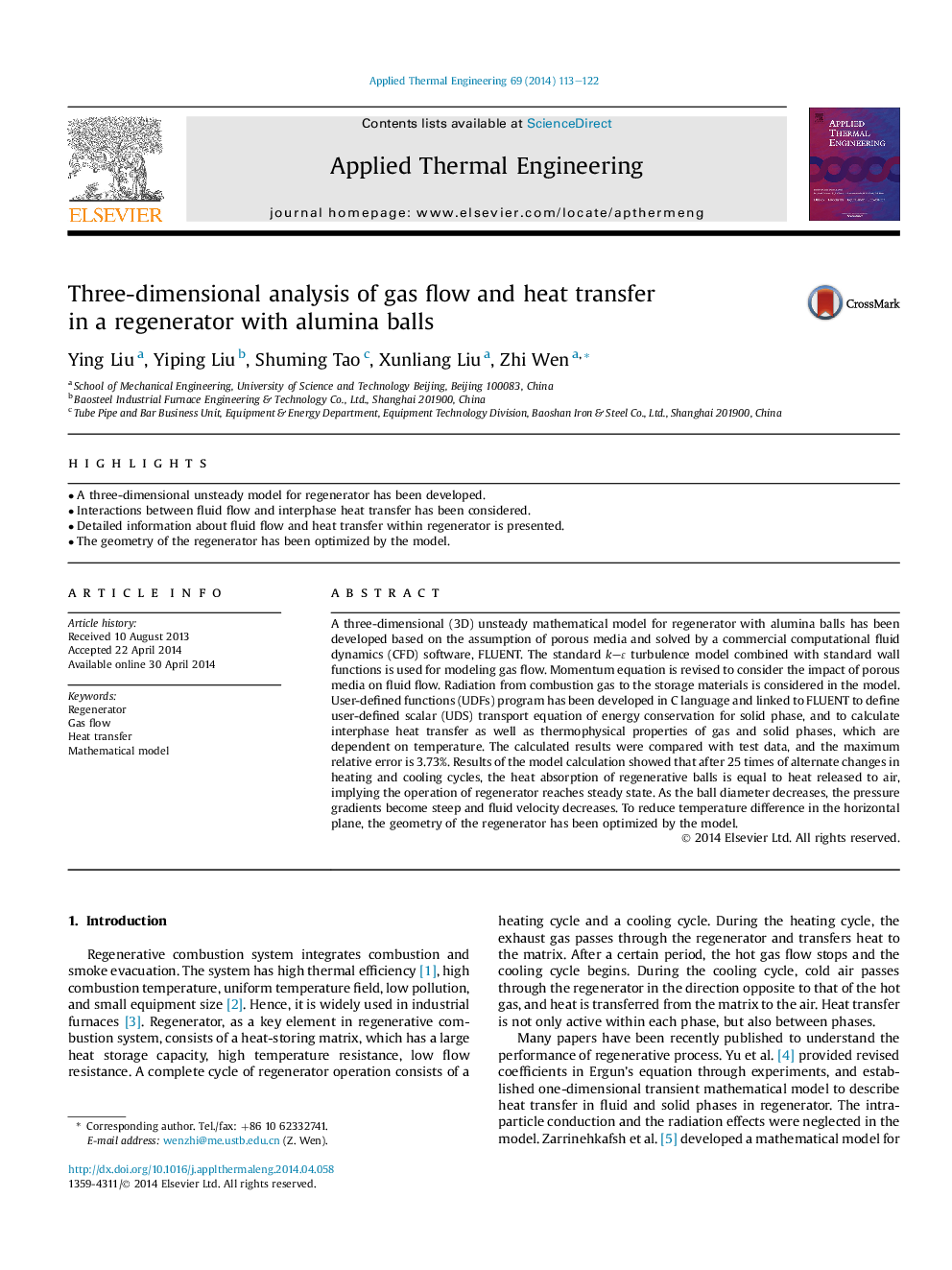| Article ID | Journal | Published Year | Pages | File Type |
|---|---|---|---|---|
| 7049050 | Applied Thermal Engineering | 2014 | 10 Pages |
Abstract
A three-dimensional (3D) unsteady mathematical model for regenerator with alumina balls has been developed based on the assumption of porous media and solved by a commercial computational fluid dynamics (CFD) software, FLUENT. The standard k-É turbulence model combined with standard wall functions is used for modeling gas flow. Momentum equation is revised to consider the impact of porous media on fluid flow. Radiation from combustion gas to the storage materials is considered in the model. User-defined functions (UDFs) program has been developed in C language and linked to FLUENT to define user-defined scalar (UDS) transport equation of energy conservation for solid phase, and to calculate interphase heat transfer as well as thermophysical properties of gas and solid phases, which are dependent on temperature. The calculated results were compared with test data, and the maximum relative error is 3.73%. Results of the model calculation showed that after 25 times of alternate changes in heating and cooling cycles, the heat absorption of regenerative balls is equal to heat released to air, implying the operation of regenerator reaches steady state. As the ball diameter decreases, the pressure gradients become steep and fluid velocity decreases. To reduce temperature difference in the horizontal plane, the geometry of the regenerator has been optimized by the model.
Related Topics
Physical Sciences and Engineering
Chemical Engineering
Fluid Flow and Transfer Processes
Authors
Ying Liu, Yiping Liu, Shuming Tao, Xunliang Liu, Zhi Wen,
